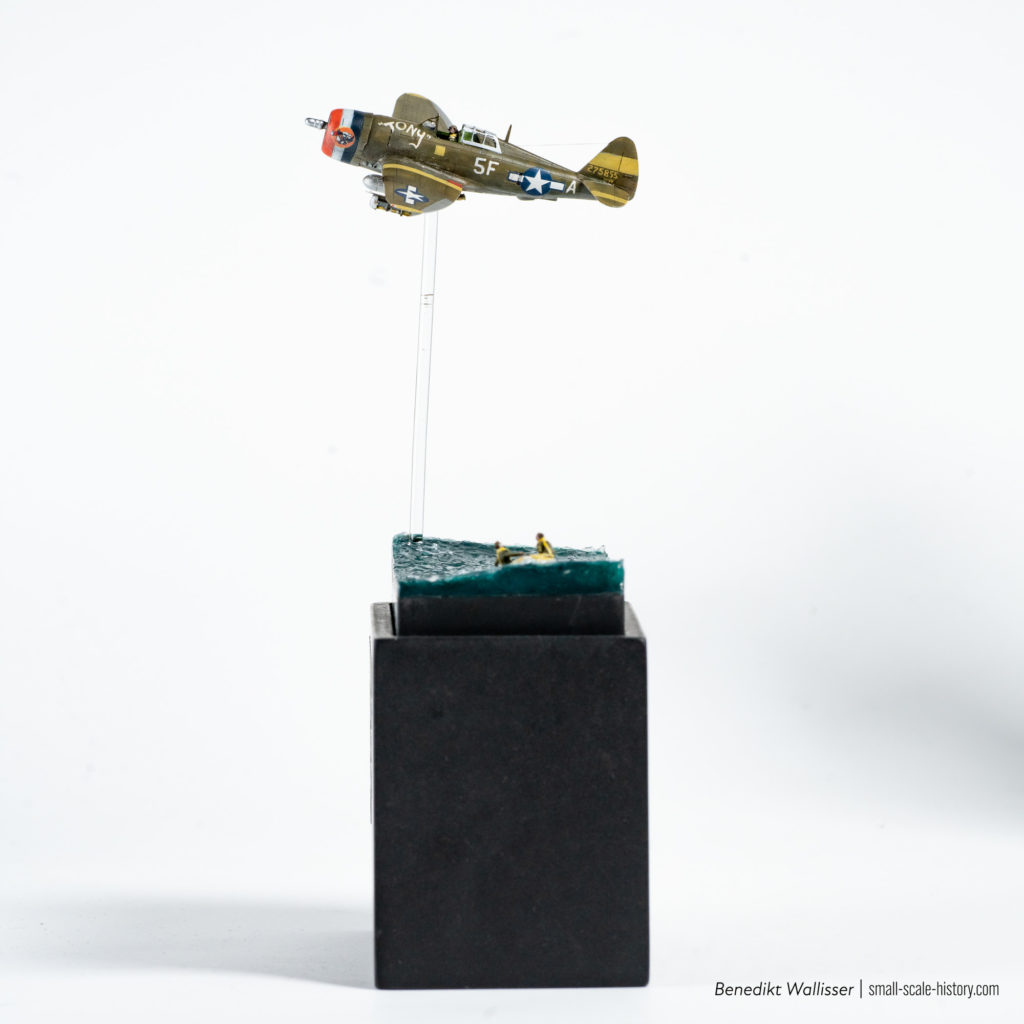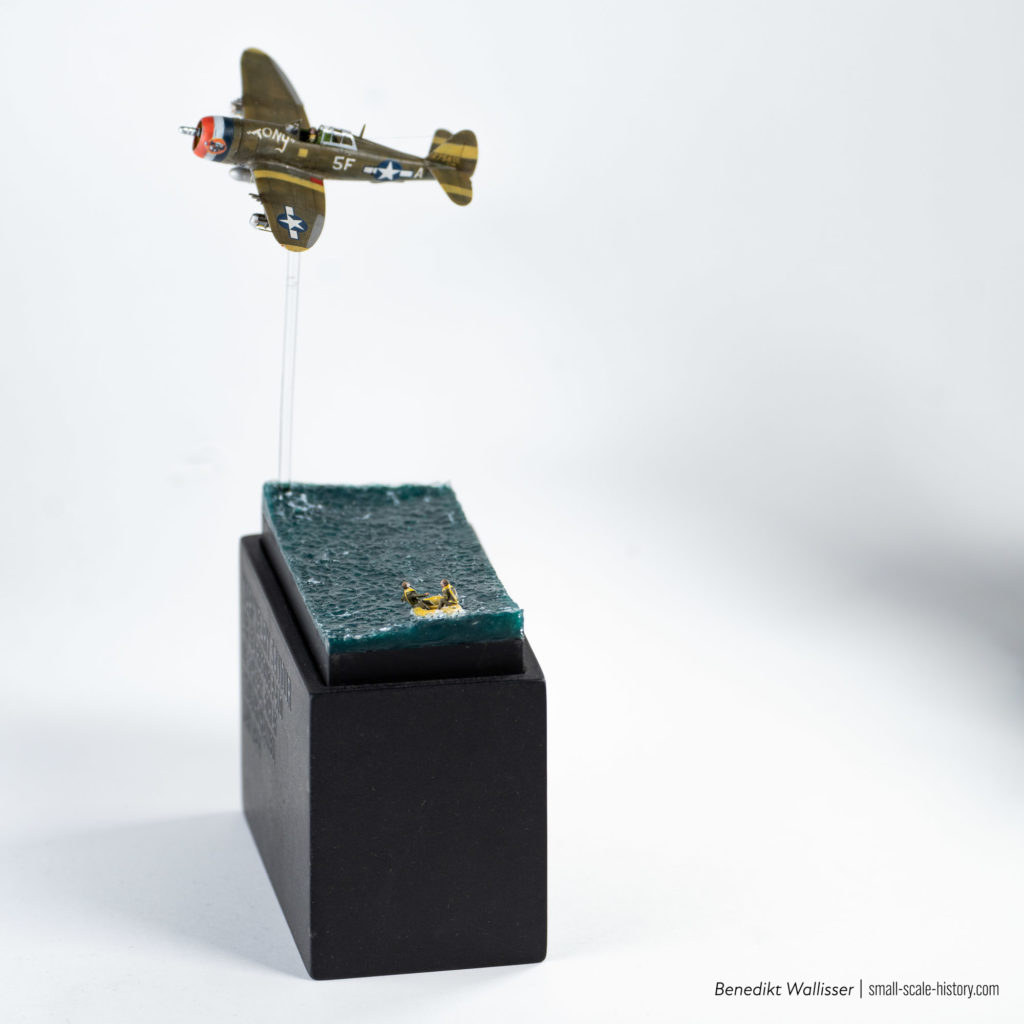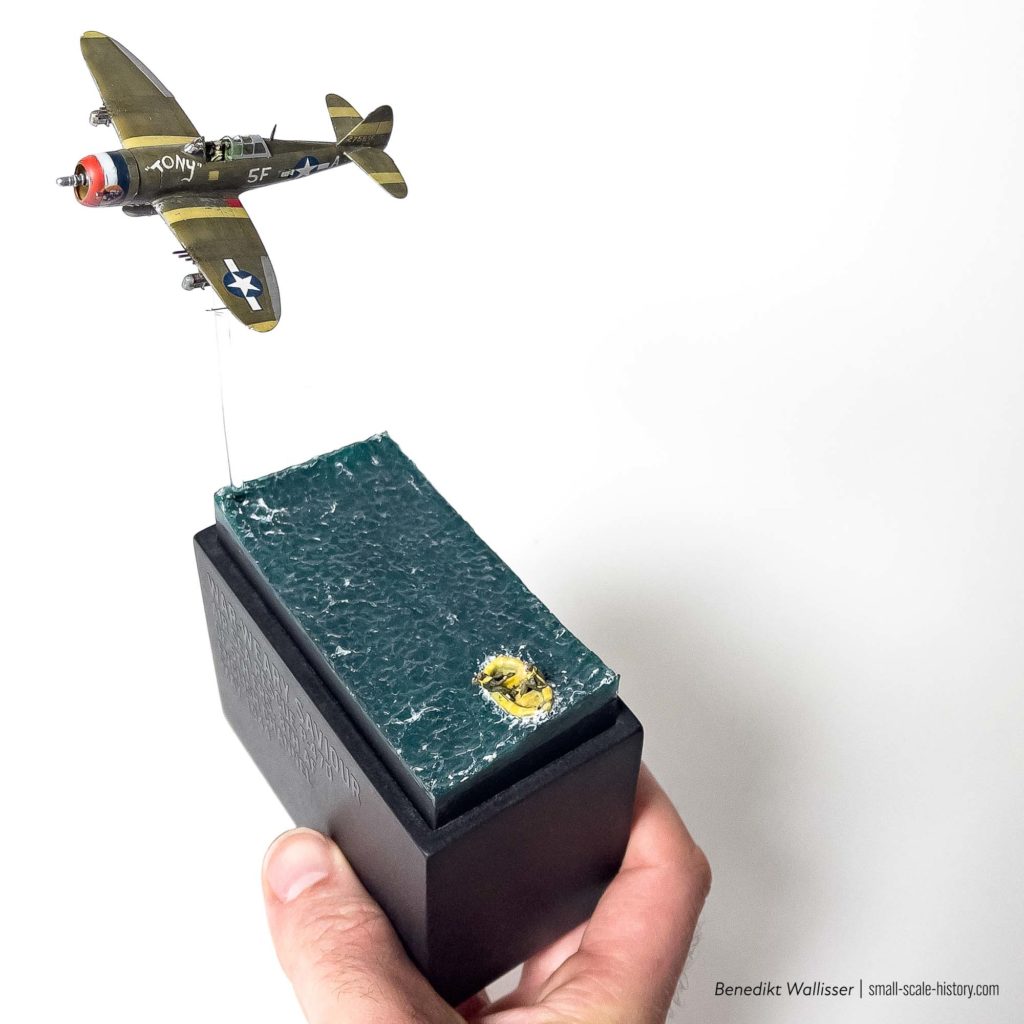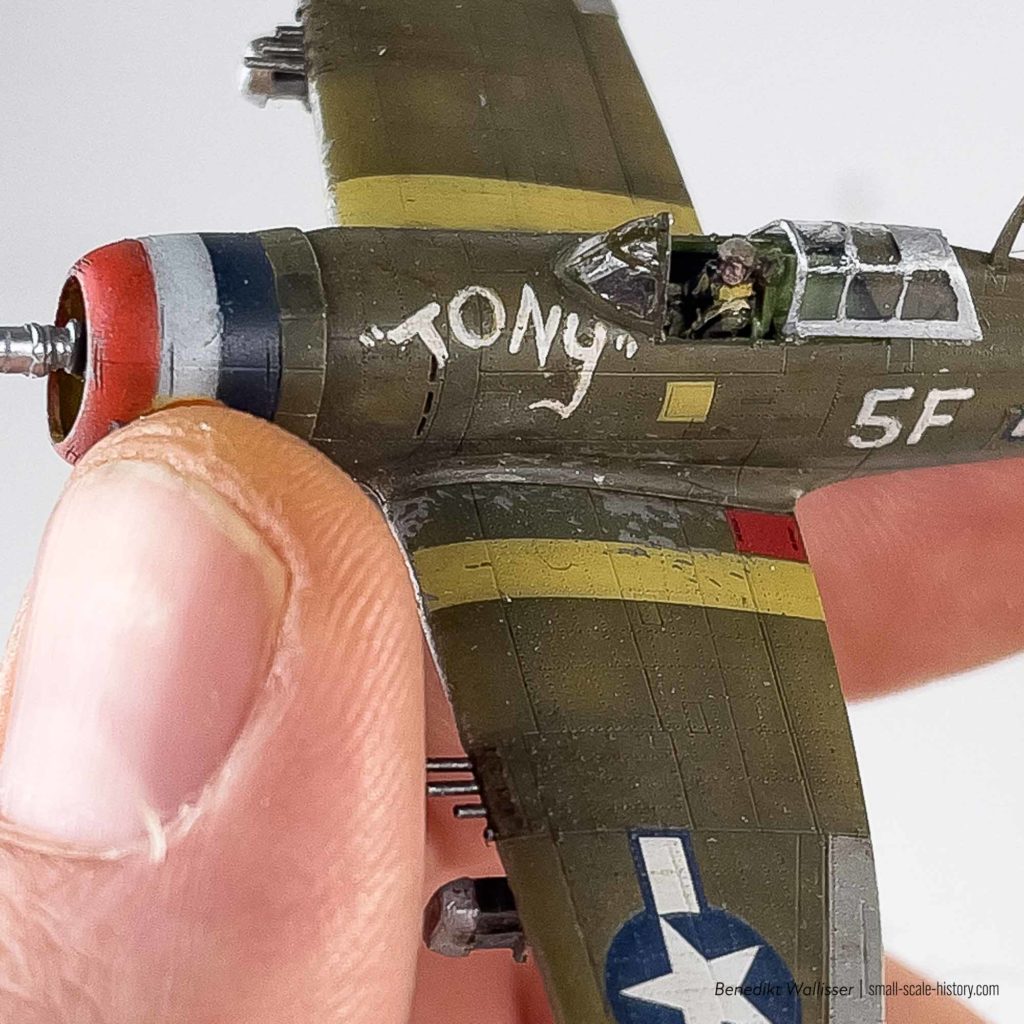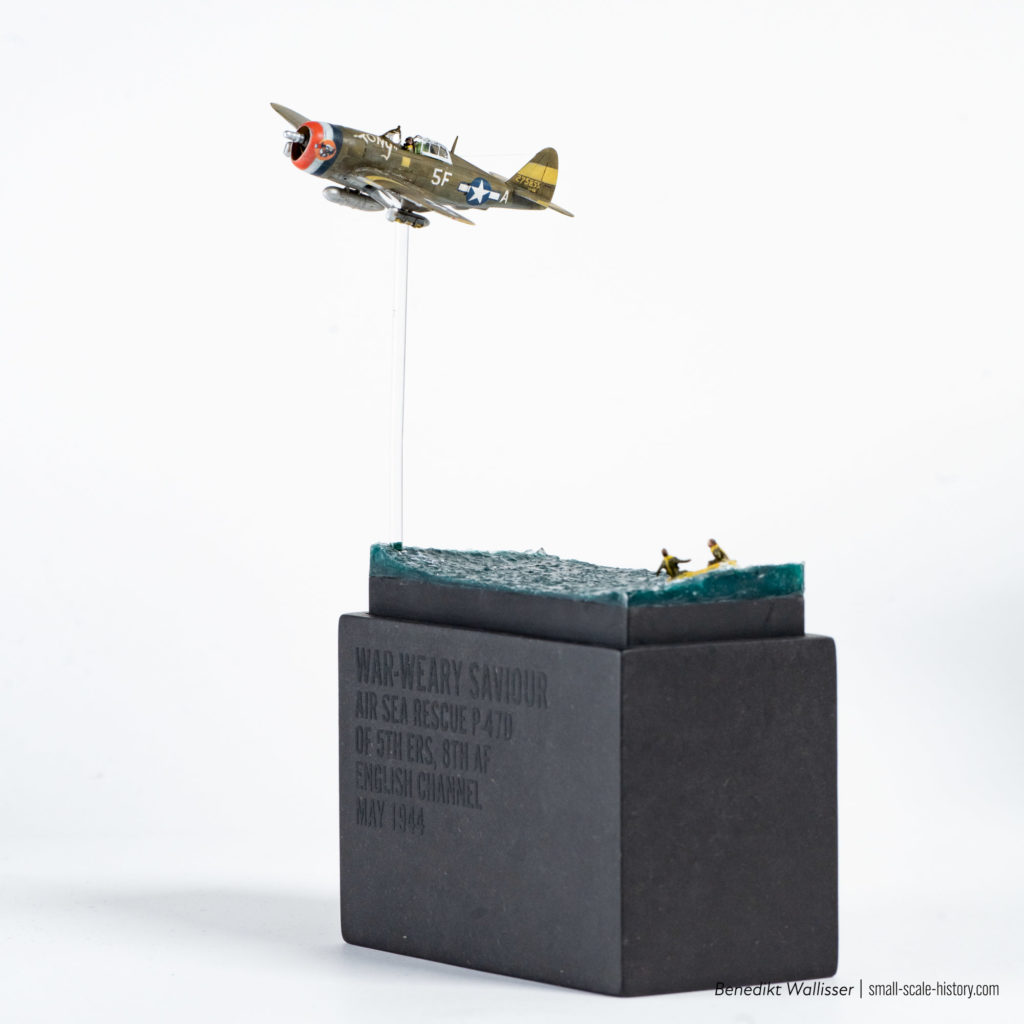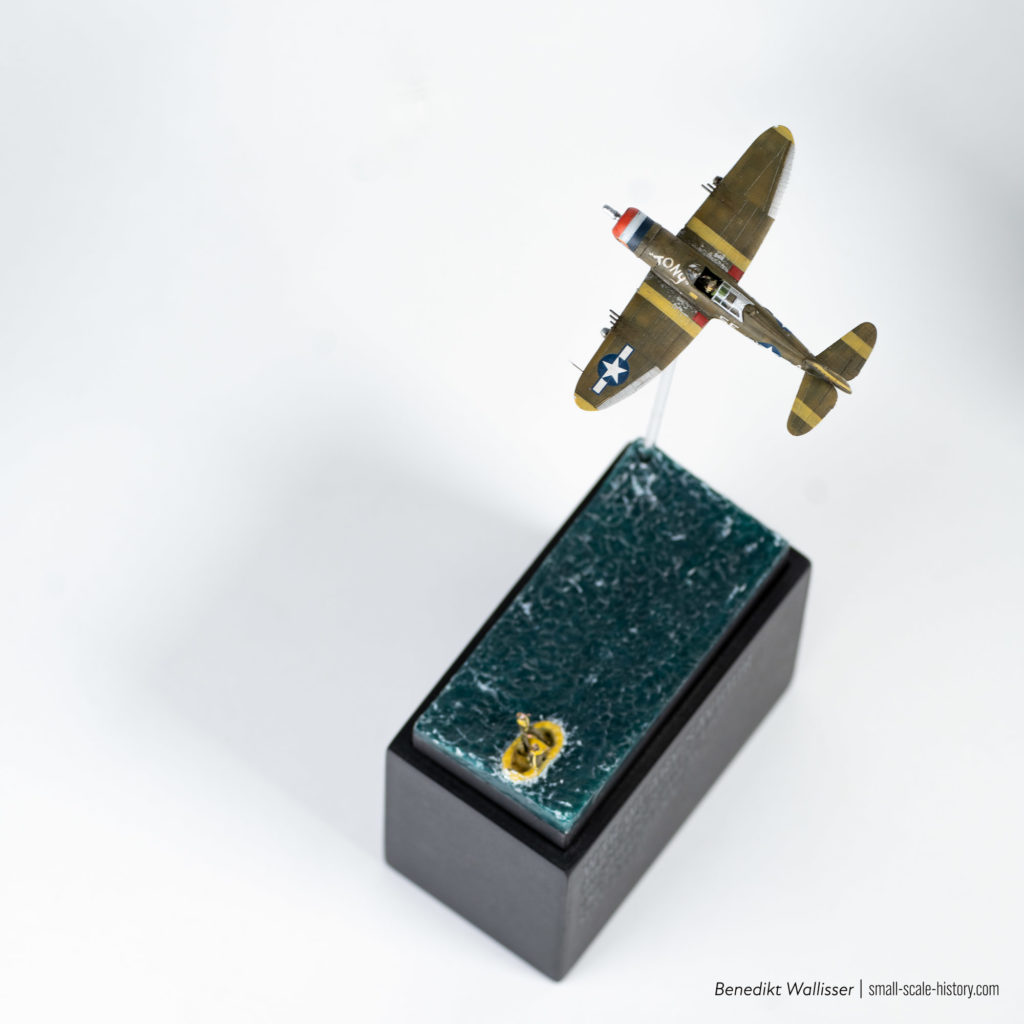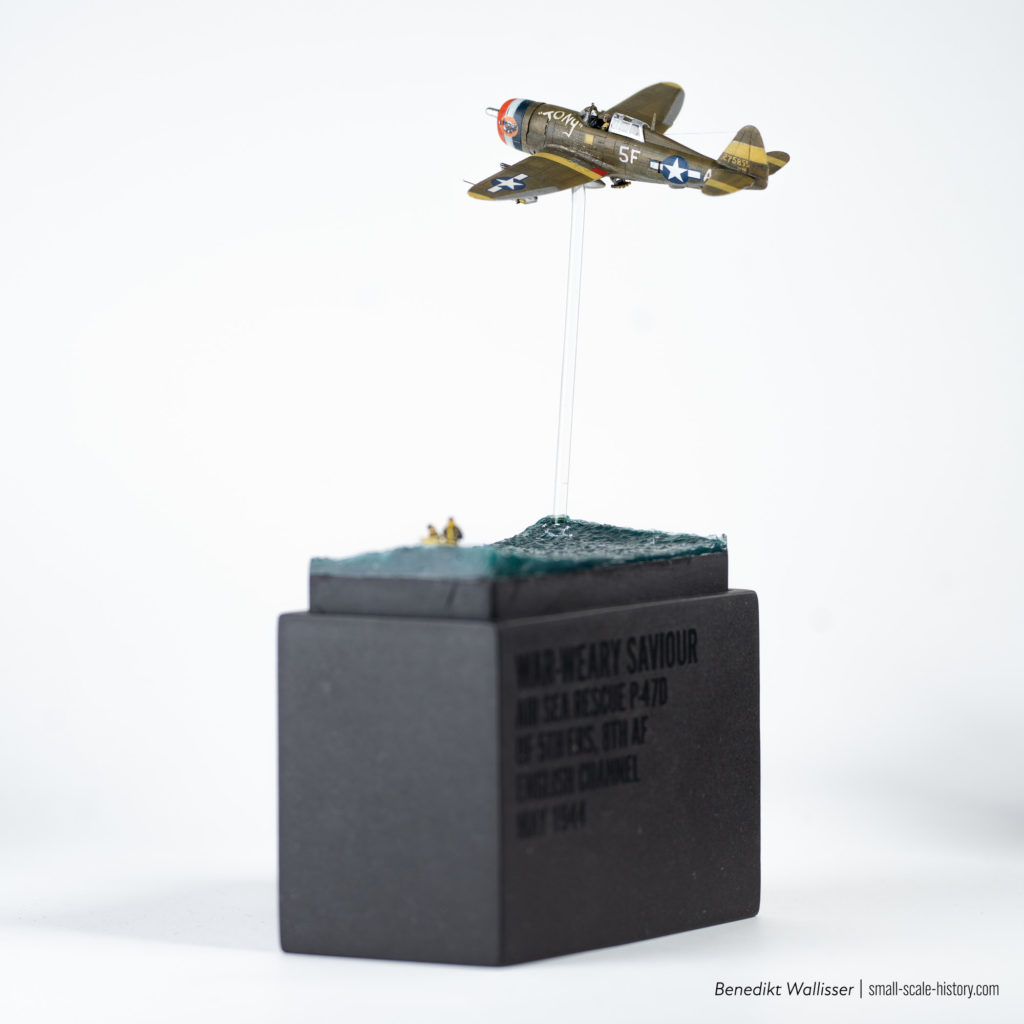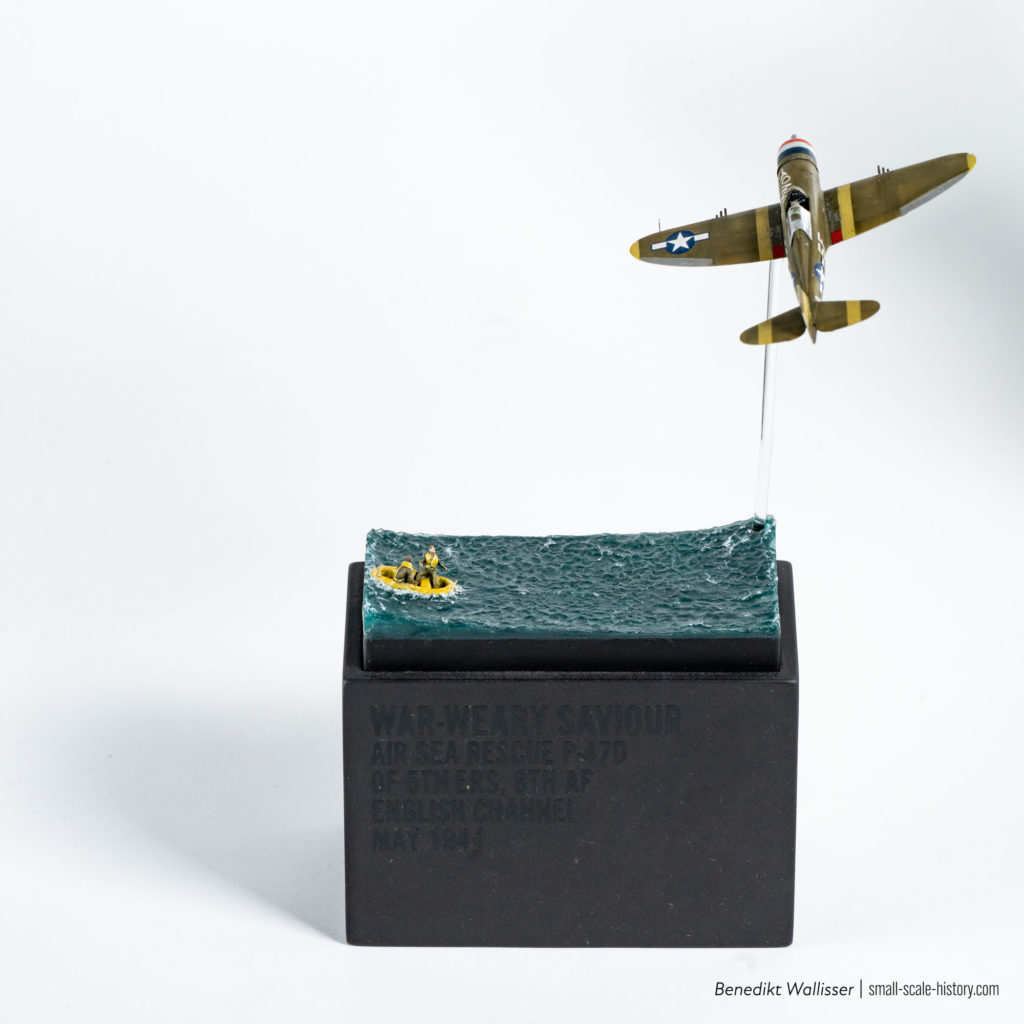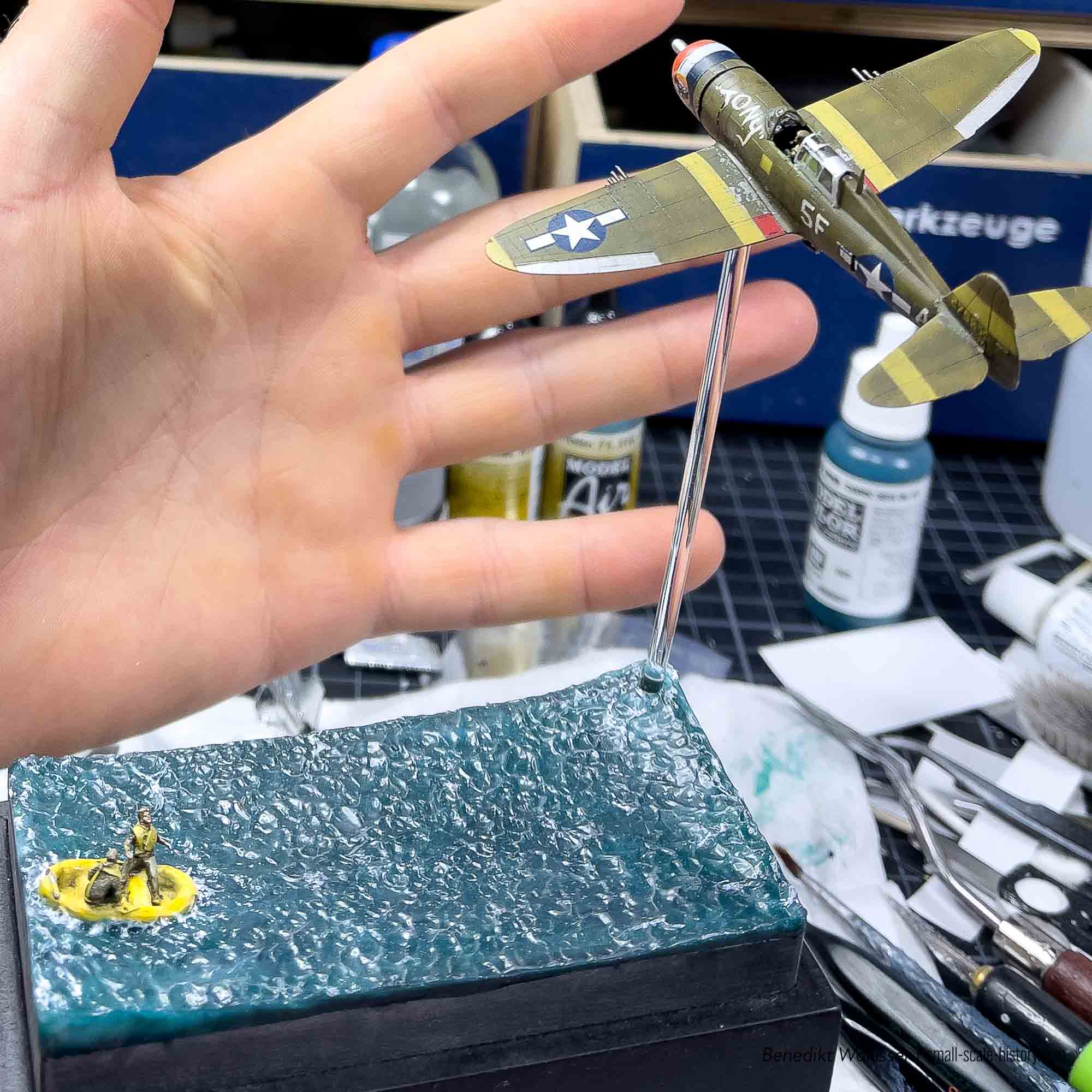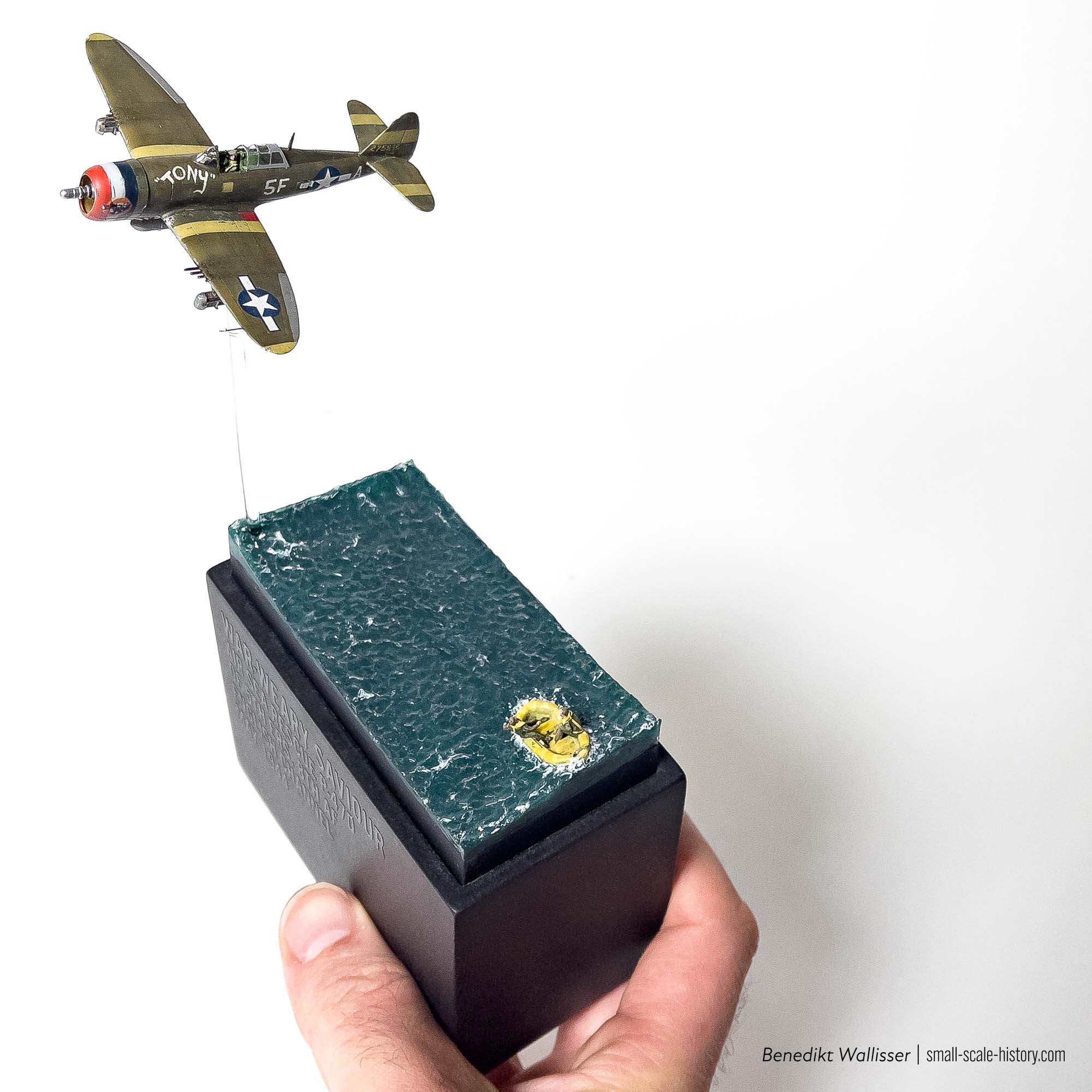
War-Weary Saviour
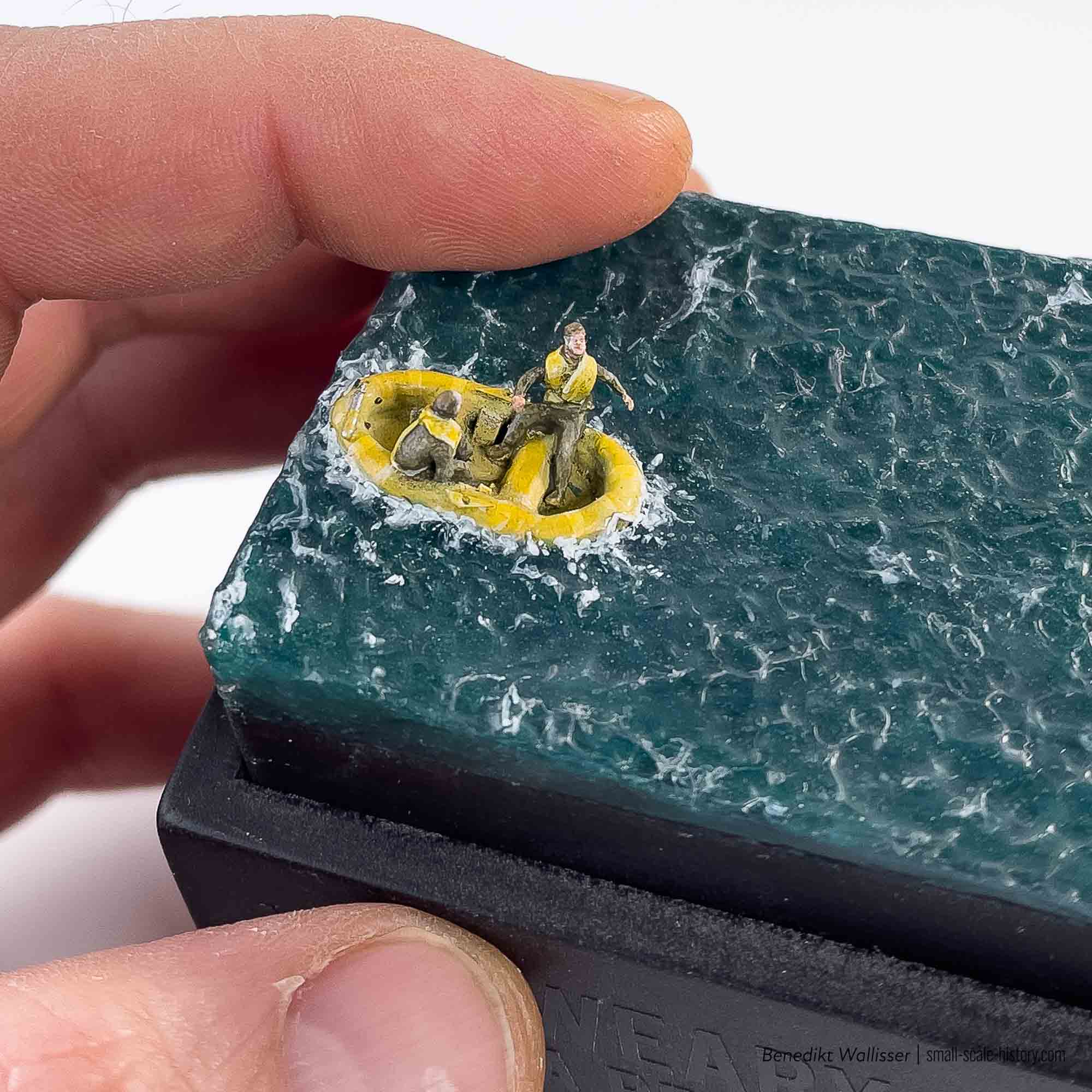
USAAF in Great Britain
While the RAF in 1944 had long been experienced in rescuing ditched bomber crews from the English Channel with the Supermarine Walrus and vessels, the high losses of aircrews in the icy waters of the Channel were a new challenge for the USAAF.
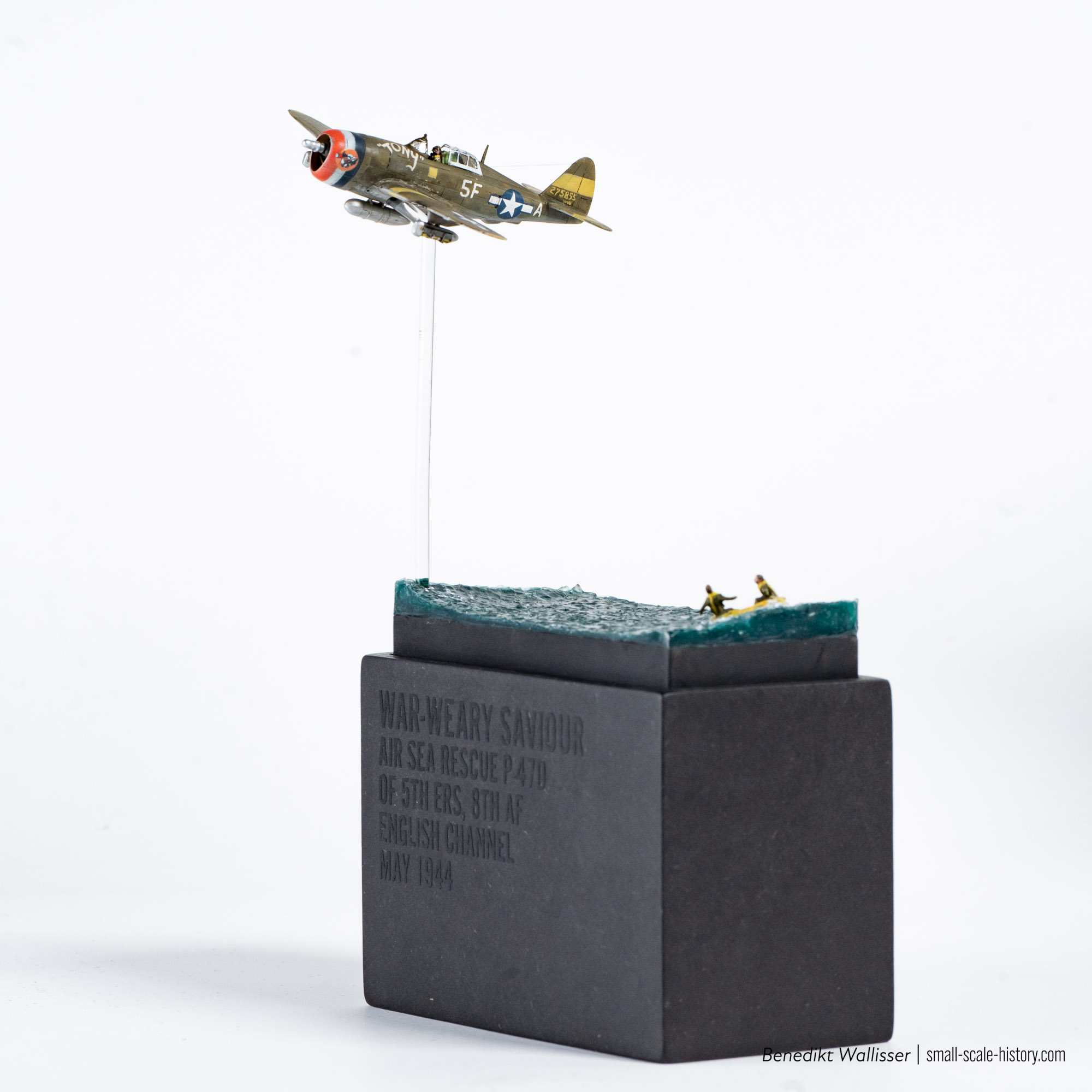
High losses over the English Channel and the North Sea
Mainly due to battle damage, lack of fuel, engine or other mechanical failures, many bomber crews had to ditch or bail out over the English Channel and the North Sea. The number of heavy bombers that ditched in the Channel and North Sea during World War II alone was 413. A study commissioned by the 8th Air Force to determine the survival rate of ditched crews from January 1943 to April 1944 showed a probability of survival of 37.9% (B-17s) and 26.5% (B-24s), with the figures varying significantly seasonally depending on water temperature. And bailing out was even more deadly. A ditching over bailing out survivability study conducted in August 1943 concluded that 58% of crew members were rescued in ditchings, while only 16% survived a bailout.
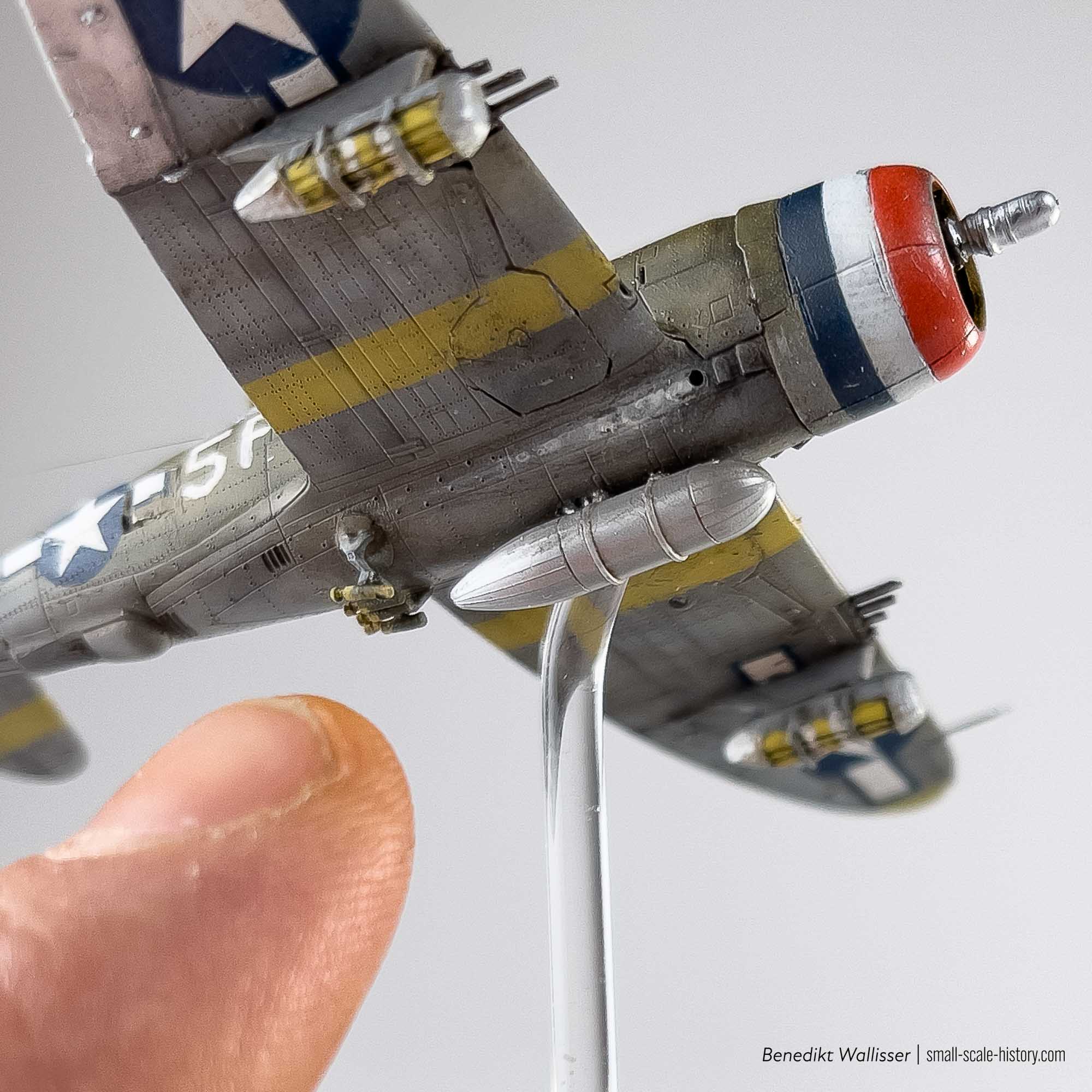
The Birth of the 5th Emergency Rescue Squadron
In May 1944, members of the RAF and the 8th Air Force, USAAF consulted about an Air Sea Rescue unit. As a result, detachment “B” of the 65th fighter wing, led by Captain Bob Gerhart, was formed. With 25 pilots, ground crew and basic equipment. Stationed at Boxted UK, two P-47 Thunderbolts accompanied each of the USAAF heavy bombers flying over the channel and responded to distress calls from the bomber crews involved. One of the Jugs flew to the named position and circled over the accident site. Dinghies and smoke markers, mounted under the wings, could be dropped to assist. The second P-47 continued to accompany the bombers to respond to further calls for help.
When Catalinas became available, the unit was moved to Halesworth and officially designated to 5th Emergency Rescue Squadron.
In total, more than 900 crew members were said to have been rescued by the 5thers.
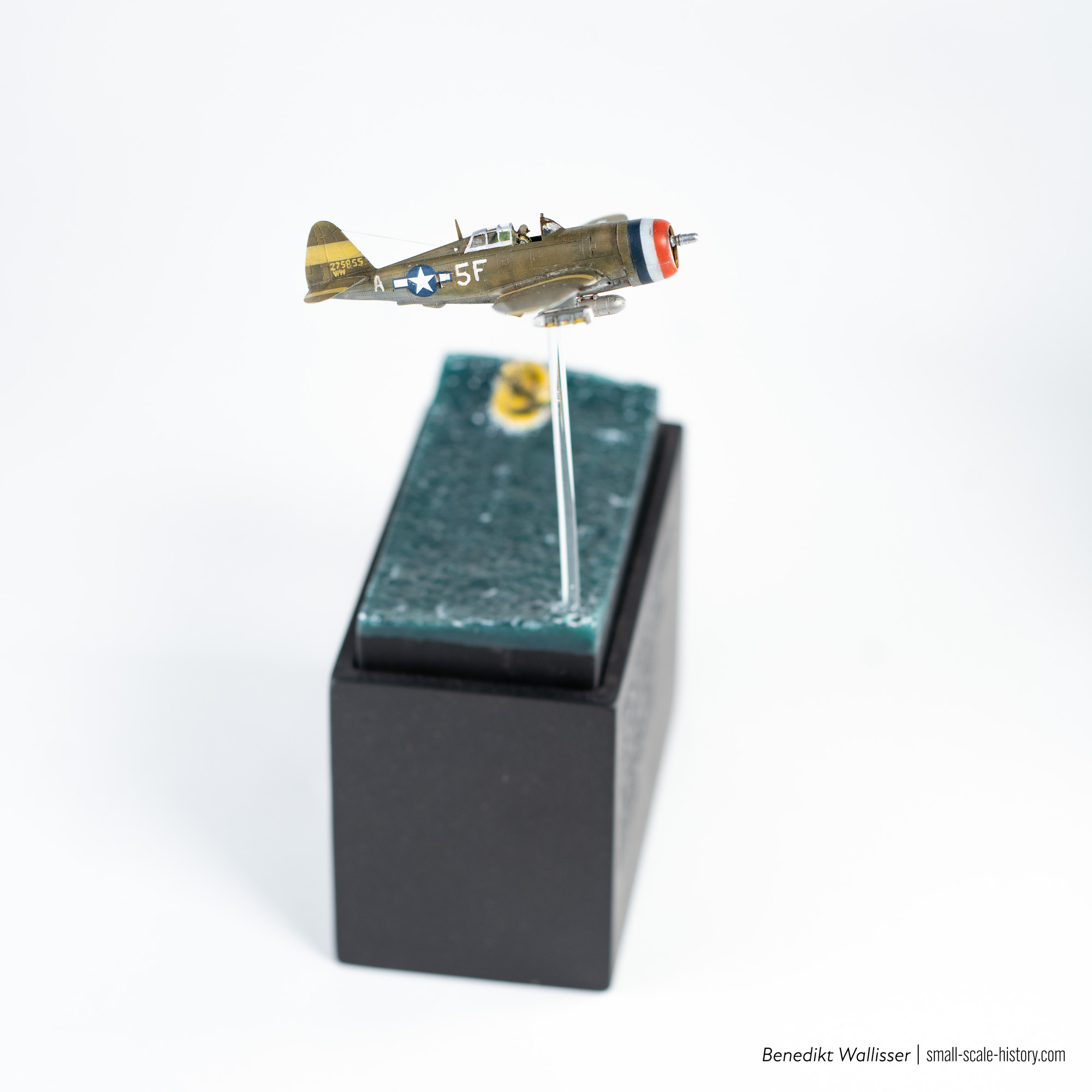
Donated War-Weary Thunderbolts from Zemke’s Wolf Pack
The unit initially had no aircraft at its disposal. Col. Hub Zemke, commander of 56th FG (“Zemke’s Wolf Pack”), donated war-weary Thunderbolts that were no longer suitable for combat use.
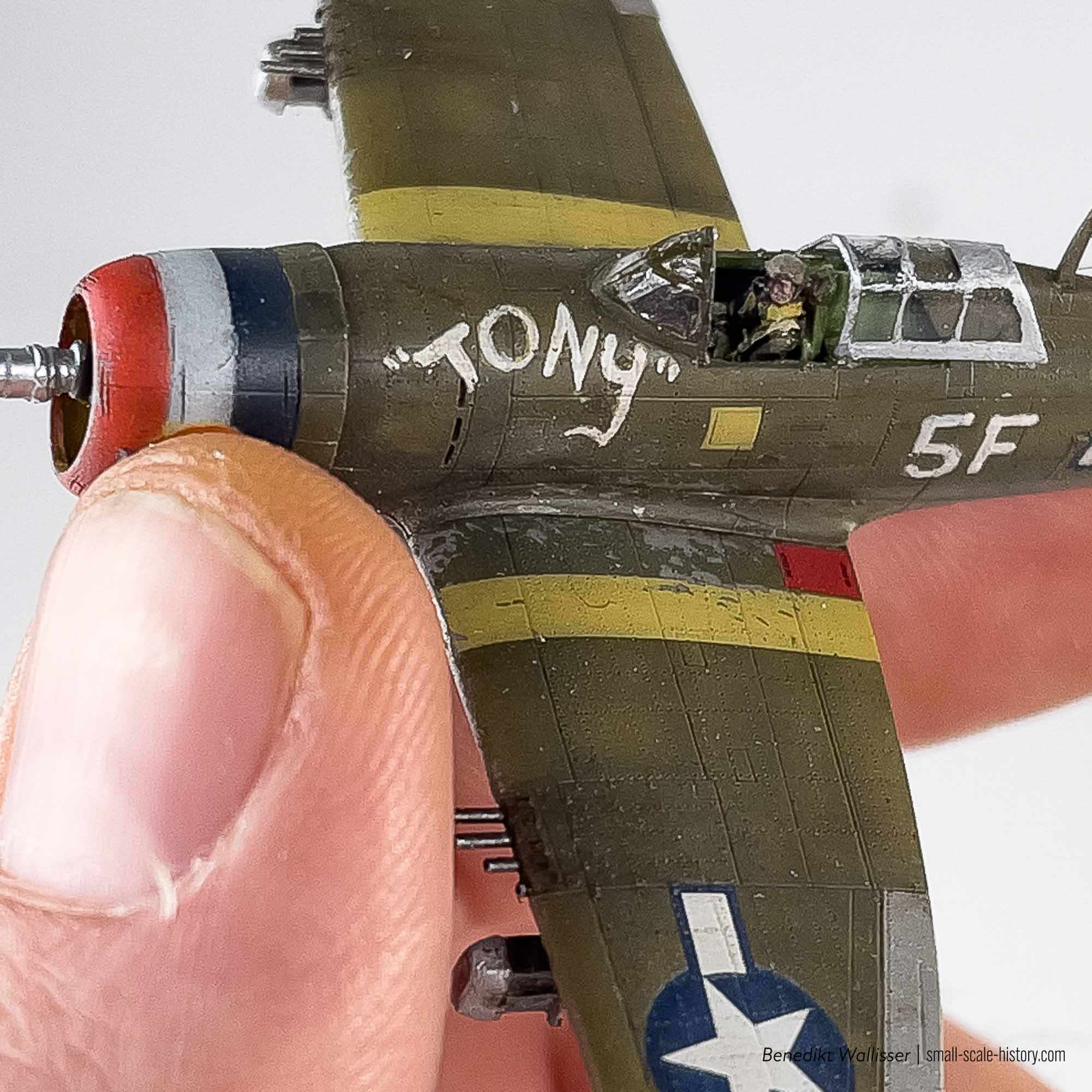
P-47 Thunderbolt 5F-A “Tony”
This P-47D-R11 Thunderbolt 5F-A “Tony”, serial number 42-75855 WW (War-Weary), originally flew with the 63rd FS, 56th FG, 8th AF before being transferred to the 5th ERS. In the vignette shown here it does not have invasion stripes applied yet. It must be around the end of May 1944.
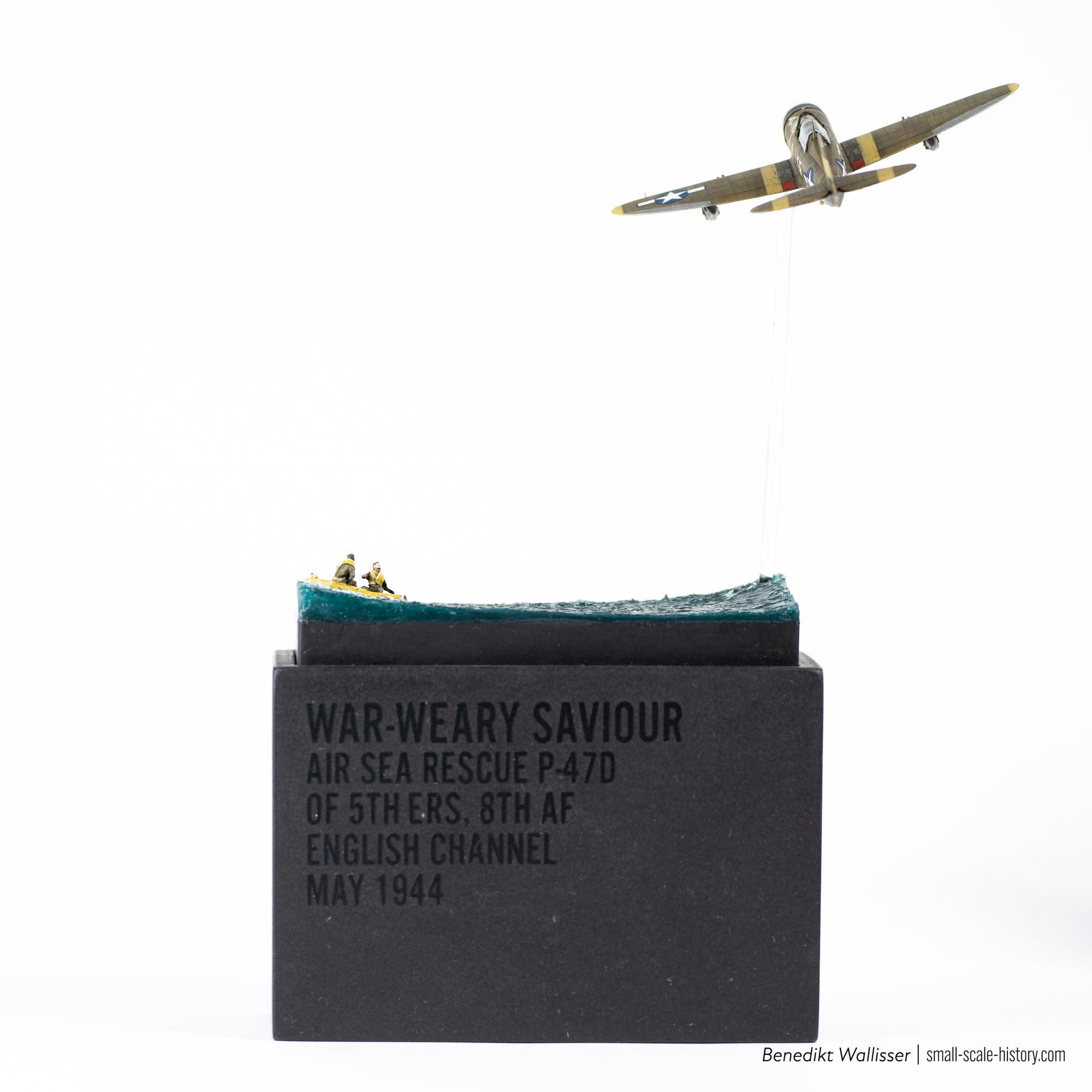
Sources
I am not a professional historian and have neither access to first-hand sources nor to reports from witnesses. All information and data summarised in this article are based on the following sources. If any information is incorrect or misrepresented, please let me know.
making-history.ca/2020/04/12/rescue-me/
www.boxted-airfield.com/groups/5th-emergency-rescue-squadron
www.americanairmuseum.com/archive/aircraft/42-75855
www.worldwarphotos.info/gallery/usa/aircrafts-2-3/p-47/p-47d-42-75855-tony-5f-a-5th-ers-1944/

The Model
Republic P-47D-R11 Thunderbolt
5th ERS, May 1944, English Channel
Scale: 1/144
Height: 190mm
Length: 150mm
Width: 75mm
Kit: Eduard / Platz
Figure: Heroes Models
War Weary Air Sea Rescue P 47D Razorback
War Weary Air Sea Rescue P 47D Razorback
War Weary Air Sea Rescue P 47D Razorback
War Weary Savior – 144th Scale Vignette 22
War Weary Air Sea Rescue P 47D Razorback
War Weary Air Sea Rescue P 47D Razorback
War Weary Air Sea Rescue P 47D Razorback
War Weary Air Sea Rescue P 47D Razorback
Air Sea Rescue water vignette
Building a 1/144th scale water vignette with a scratch built life raft for an air sea rescue P-47D diorama
Scratch building a life raft for air sea rescue vignette
Modification of 1/144 resin figures and scratchbuilding a life raft from styrene.
Painting and weathering A war-weary P-47D
Painting and weathing a war-weary P-47D Razorback of 5th Emergency Rescue Squadron without decals in 1/144 scale
Building a war-weary Air Sea Rescue P-47 Razorback in 1/144 scale
Building an 1944 USAAF Air Sea Rescue P-47D Razorback from the 1/144 Eduard/Platz kit and scratch building dinghy packs and smoke markers
1/144 P-47D Thunderbolt kit (Platz / Eduard)
The top-class P-47D Thunderbolt Razorback and Bubble Top kits from Platz/Eduard in 1/144 scale – Kit review

